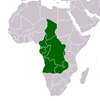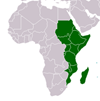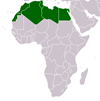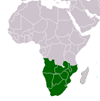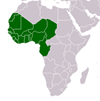United Nations Environment Programme (UNEP) 2005 annual evaluation report
United Nations Environment Programme (UNEP) 2005 annual evaluation report
A. EVALUATION: 1. The present evaluation report is a synthesis of all evaluations conducted by the Evaluation and Oversight Unit in 2005 and comprises information provided in 20 in-depth project evaluation reports and 104 self-evaluation reports. The report is based on a review and assessment of the key parameters in four specific areas: (i) relevance and appropriateness; (ii) effectiveness and efficiency; (iii) results and impact; and (iv) sustainability. Il also contains a review of the status of implementation of recommendations contained in the annual evaluation reports from 2000 to 2004 and a separate chapter on UNEP partnership agreements with donor Governments. 2. The present report includes an analysis of the performance ratings of projects assessed by independent evaluators. The ratings were based on assessments of 11 key parameters, including the achievement of overall project objectives, which was determined by comparing actual results to planned results. The evaluations concluded that the overall performance of the projects assessed was "good". 3. UNEP projects have continued to strengthen the capacity of partner institutions at the national, regional and subregional levels, contributed to the implementation of international conventions, led to the development of analytical methods and tools, raised awareness among policy and decision makers, and promoted stronger stakeholder participation. 4. A number of factors contributed to the success of projects in delivering planned results. These included robust consultations with relevant stakeholders during project design, good vision and project leadership, improved adaptive management, effective use of national expertise, timely execution of project activities, strong country ownership and strengthened technical and institutional capacity in project countries. 5. The project evaluation identified several challenges. Among the most important are ambiguous or unrealistic objectives and outputs, largely arising from poor project design; unrealistic expectations given limited financial resources; a lack of clearly defined monitoring and evaluation plans; insufficient time to achieve project objectives; limited involvement of private sector institutions; and ineffective dissemination of project results and limited replicability to other project contexts. In addition, the sustainability of several project without UNEP funding remained a major concern. 6. A total of 104 project self-evaluation reports were completed, representing a compliance rate of 71 per cent, which is substantially lower than the 84 per cent reported in 2004. Of these projects, 31 per cent were global in their scope, six per cent had an interregional focus, 25 per cent were regional and 38 per cent were implemented at the subregional or national levels. UNEP has continued to step up its activities at the national level, particularly in the area of capacity-building Forty-four per cent of the projects delt with environmental issues prioritized at the 2002 World Summit on Sustainable Development in the areas of water, energy, health, agriculture and biodiversity. Biodiversity-related projects alone accounted for 29 per cent of the self-evaluation reports submitted.
CITATION: United Nations Environment Programme (UNEP). United Nations Environment Programme (UNEP) 2005 annual evaluation report . Nairobi : UNEP , 2006. - Available at: https://library.au.int/united-nations-environment-programme-unep-2005-annual-evaluation-report-3

